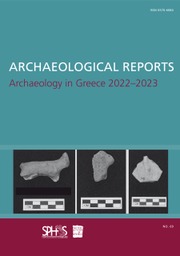No CrossRef data available.
Article contents
4 Zooarchaeological research in Greece from 2010 to date: A review
Published online by Cambridge University Press: 09 March 2023
Abstract
Greek archaeology, and especially prehistory, has been a field of pioneering zooarchaeological research from as early as the first half of the 20th century. The discipline retains this innovative dynamism and actively participates in the international developments that shape its future. This paper takes a critical look at zooarchaeology in Greece and highlights its current trends as they may be teased out from the considerable and multifaceted body of research published since 2010. In comparison to earlier decades, zooarchaeological research in Greece over the last decade has been characterized by the breadth of its achievements and progress in almost every aspect. Institutional representation and zooarchaeological infrastructure in the country, however, still needs enhancing. Overall, though, the presence of a large number of contributing researchers from Greece and abroad, the diffusion of zooarchaeological data across an increasingly wide range of disciplines, and the augmented inclusion of zooarchaeological results in the wider archaeological and historical narratives certainly point towards a promising future.
- Type
- Archaeology in Greece 2021–2022
- Information
- Copyright
- © The Author(s), 2023. Published by Cambridge University Press on behalf of the Society for the Promotion of Hellenic Studies and the British School at Athens


